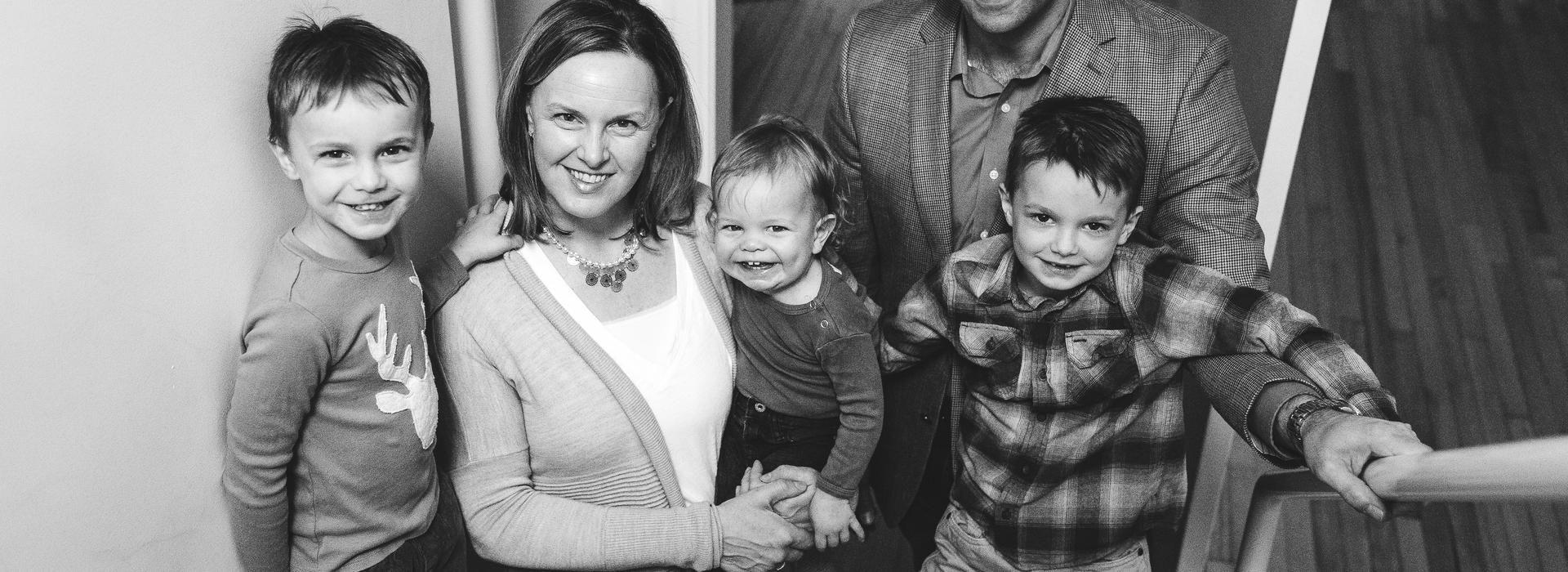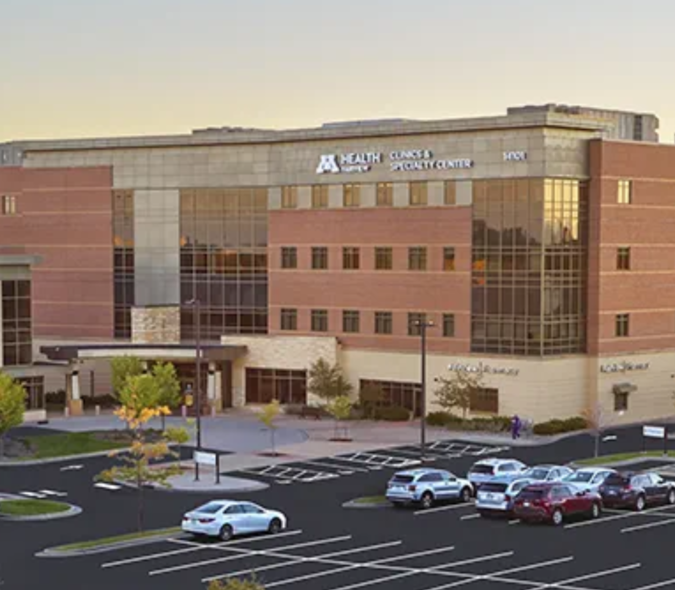
Associate Professor Alicia Harrison, MD, Leading the Way in Orthopedic Education
EXCELLING IN THE MEDICAL FIELD runs in the family of Associate Professor Alicia Harrison, MD. Her father, a general critical care surgeon, and her mother, an obstetrics registered nurse, exposed her to the world of medicine while growing up in Kansas. In fact, many in Harrison’s family, including her grandmother, an oncology nurse, pursued careers in patient care. Initially, Harrison considered following in her father’s footsteps as a general surgeon. That was until she noticed the orthopedic surgery residents’ above-average job satisfaction while completing medical school at the University of Kansas.
“I found orthopedic surgeries interesting and enjoyed restoring function for a lot of our patients, which is not always the case for other specialties,” she explains. “The impact on the patient's life was really satisfying to me.”
Harrison had ties to Minnesota since she played basketball at St. Olaf College during her undergraduate studies, and considered an orthopedic surgery residency at the U. After enjoying an away rotation at the VA during her final year of medical school, Harrison applied to the Department of Orthopedic Surgery Residency Program in 2003.
At that time, one of Harrison’s highly ranked residency programs had never had a female resident. She remembers that there weren’t many female orthopedic surgeons in leadership positions conducting resident interviews. This wasn’t the case at the U, where Harrison vividly recalls an interview with Professors Elizabeth Arendt, MD, and Ann Van Heest, MD.
“It was scary,” Harrison says with a smile. “We joke about it now, but I still remember that interview room. Those women were, and are, clearly a force, and that was impressive.”
Harrison was accepted into the program and commenced her training in 2004. She says that in retrospect, she has come to appreciate the department’s commitment to recruiting female faculty and residents because women are underrepresented in orthopedics. An article authored by Assistant Professor Caitlin Chambers, MD, published in the Journal of Bone and Joint Surgery, found that in the 2016-2017 academic year 14 percent of orthopedic surgery residents were women, the lowest of any surgical specialty. In contrast, the Department of Orthopedic Surgery Residency Program has trained 25 percent females over the last decade.
The department also surpasses U.S. averages for women in positions of leadership, according to data from the Association of American Medical Colleges published in the Journal of Bone and Joint Surgery. Currently, 20 percent of the department’s professors are female, while the U.S. average is nine percent. Eighteen percent of associate professors and 37 percent of assistant professors are female, while the national averages are 15 and 20 percent respectively.
“I never thought it was a big deal to be a woman pursuing orthopedic surgery,” says Harrison. “However, in some programs, it is more of a challenge than at the University of Minnesota. I came to appreciate what our program does to develop and train women much more during my residency than when I was applying, because at the time I didn’t give it much thought.”
As a second-year resident, Harrison was randomly assigned shoulder as her dissection project. Shoulder surgeon and Associate Professor Jonathan Braman, MD, mentored her throughout the process.
“He was so enthusiastic and passionate about shoulder anatomy and it rubbed off on me,” Harrison recalls. “It makes a huge difference when you have an educator who is really passionate about what they do, and at that point I decided to pursue a shoulder subspecialty.”
After graduating from the residency program in 2009, Harrison knew that she wanted to develop a complex shoulder practice, which can be challenging in the U.S. because of limited private practice and academic opportunities. To achieve this vision, she completed the prestigious Mount Sinai Hospital Shoulder and Elbow Fellowship in New York, which gave her a breadth of complex shoulder experience. Upon completion, Braman partnered with the department’s faculty to bring Harrison to the Twin Cities for good.
“My partners here at the University are why I chose this job,” she says. “Healthcare is a challenging field; it’s stressful and patient care can sometimes be hard. I think the only way it can be fun, interesting, and rewarding, is to have people with the same goals and objectives working with you.”
In 2014, Harrison was selected to be the department’s associate residency program director, and a year later the clerkship director. This was a path she didn’t expect to take when she joined the department’s faculty.
“I liked working with residents, but education is challenging,” she says. “Especially when you are working with and educating many levels of learners – from first-year medical students to fellows.”
To address trainees’ varying learning stages, the education team supports “near peer” mentoring. Near peer mentoring partners more experienced fellows and senior residents with junior residents and medical students.
“The way a practicing orthopedic surgeon evaluates a patient is different from how a third-year medical student does,” Harrison explains. “When training multiple levels of learners, it’s helpful to engage them to help educate each other. We have residents that are fantastic educators, and that’s really fun to see.”
“I think education is hard, but it’s rewarding,” she says. “Seeing residents graduate from this program and take care of Minnesotans with skill and compassion is the highlight of being an orthopedic educator here. That is certainly the crux of our orthopedic education program.”
While Harrison is now a mentor and role model for the department’s residents, she has her own mentors, both male and female, that have been supportive throughout her career. “My whole career in shoulder surgery and who I am as a surgeon is because of this residency and the people in it, my teachers,” she says.
The department’s residency program trains excellent surgeons to provide care in any setting – from private practices in small and large communities to academics. “My own wonderful classmates from this program are an excellent example of this,” she adds. “I’m so proud and honored to have worked with all of them (Drs. Botker, Cross, Glisson, Glynn, Kimber, and Schechinger).”
While she has made significant contributions to education, research, and patient care in the department, she recognizes the impact of showing her three sons, Nate (2), Drew (5), and Evan (6), that hard work and dedication to something outside of yourself is important, but also comes with sacrifices.
“They know I’m sometimes not with them when I would like to be, but that it’s for the care of somebody else,” she explains. “I think it’s important for them to see the upsides and downsides to my job, and it is important for them to see these jobs being done by a more diverse community.”
She’s also devoted to teaching them the family’s favorite pastime: fly fishing. While growing up, her extended and immediate family took a fly fishing trip to Crested Butte, Colorado, every summer. Now, she hopes to instill a love for the hobby in her boys.
“That was really formative family time,” Harrison recalls. “Fly fishing is a big thing in my family.”
Professionally, Harrison is proud that the University of Minnesota provides exceptional care to patients with complex conditions.
“It’s an honor to work with this group of people and call them my friends and partners,” she says. “I think very highly of my colleagues, and am proud of what they contribute to patient care, education, and the orthopedic surgery community.”



